Charles Ringer
From Theory to Behaviour: Towards a General Model of Engagement
Apr 27, 2020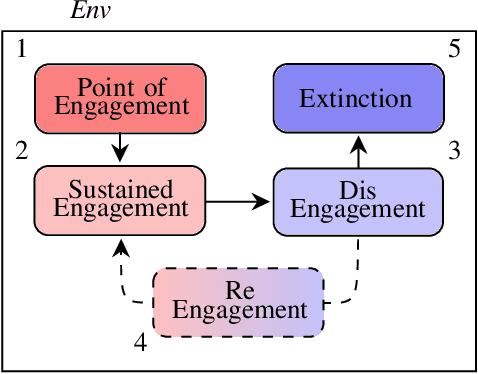
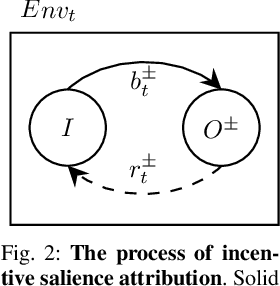
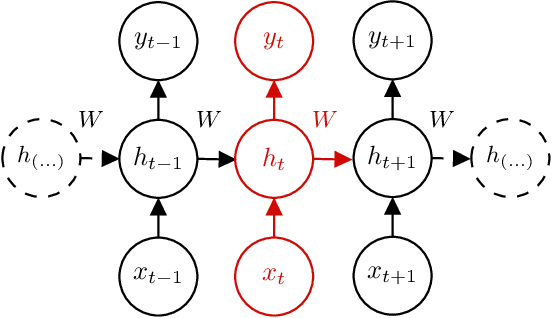
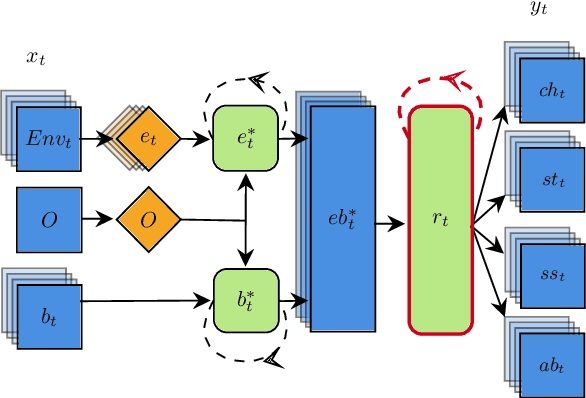
Abstract:Engagement is a fuzzy concept. In the present work we operationalize engagement mechanistically by linking it directly to human behaviour and show that the construct of engagement can be used for shaping and interpreting data-driven methods. First we outline a formal framework for engagement modelling. Second we expanded on our previous work on theory-inspired data-driven approaches to better model the engagement process by proposing a new modelling technique, the Melchoir Model. Third, we illustrate how, through model comparison and inspection, we can link machine-learned models and underlying theoretical frameworks. Finally we discuss our results in light of a theory-driven hypothesis and highlight potential application of our work in industry.
Multimodal Joint Emotion and Game Context Recognition in League of Legends Livestreams
May 31, 2019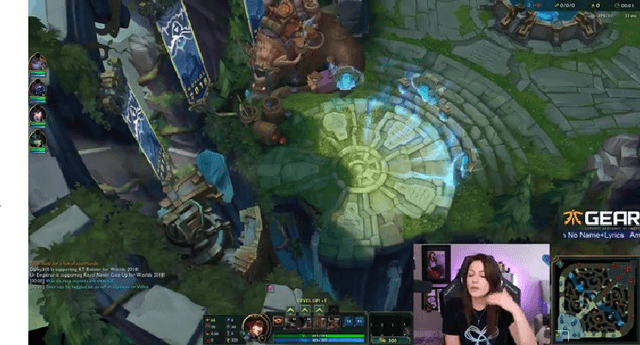

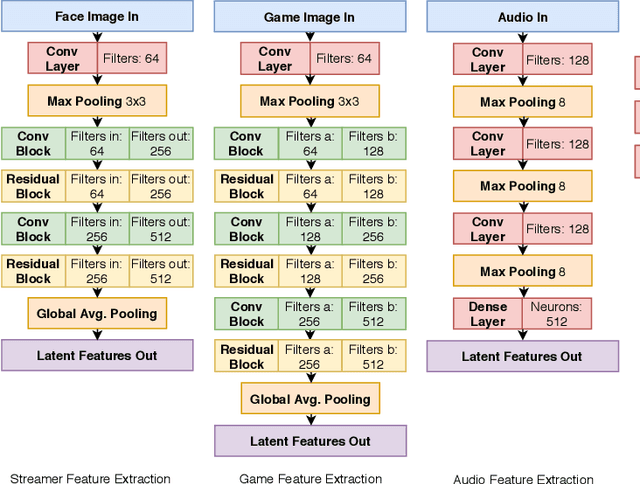

Abstract:Video game streaming provides the viewer with a rich set of audio-visual data, conveying information both with regards to the game itself, through game footage and audio, as well as the streamer's emotional state and behaviour via webcam footage and audio. Analysing player behaviour and discovering correlations with game context is crucial for modelling and understanding important aspects of livestreams, but comes with a significant set of challenges - such as fusing multimodal data captured by different sensors in uncontrolled ('in-the-wild') conditions. Firstly, we present, to our knowledge, the first data set of League of Legends livestreams, annotated for both streamer affect and game context. Secondly, we propose a method that exploits tensor decompositions for high-order fusion of multimodal representations. The proposed method is evaluated on the problem of jointly predicting game context and player affect, compared with a set of baseline fusion approaches such as late and early fusion.
Modelling Early User-Game Interactions for Joint Estimation of Survival Time and Churn Probability
May 31, 2019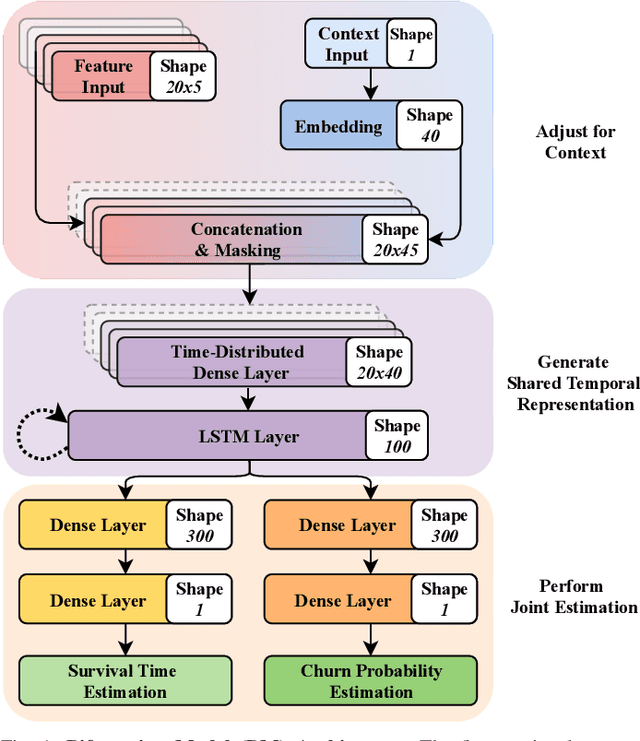
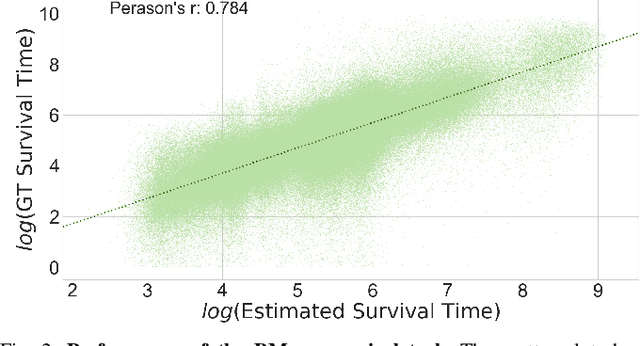
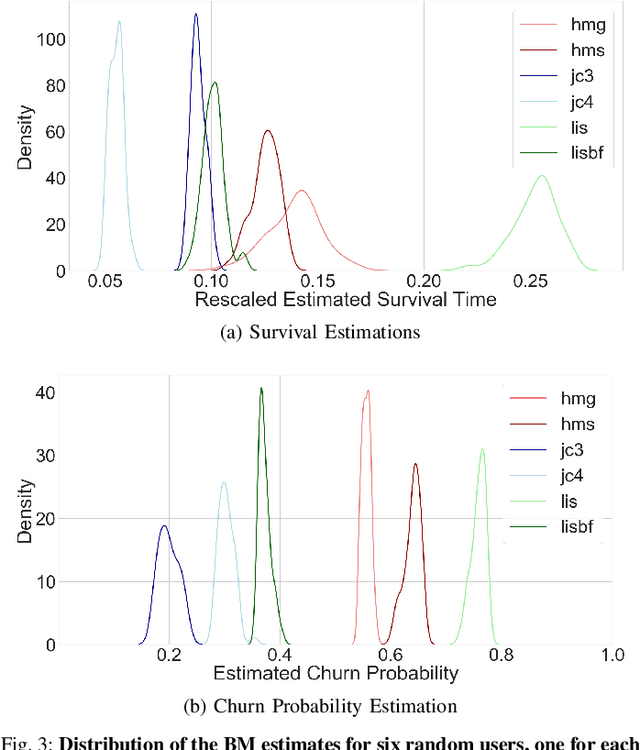

Abstract:Data-driven approaches which aim to identify and predict player engagement are becoming increasingly popular in games industry contexts. This is due to the growing practice of tracking and storing large volumes of in-game telemetries coupled with a desire to tailor the gaming experience to the end-user's needs. These approaches are particularly useful not just for companies adopting Game-as-a-Service (GaaS) models (e.g. for re-engagement strategies) but also for those working under persistent content-delivery regimes (e.g. for better audience targeting). A major challenge for the latter is to build engagement models of the user which are data-efficient, holistic and can generalize across multiple game titles and genres with minimal adjustments. This work leverages a theoretical framework rooted in engagement and behavioural science research for building a model able to estimate engagement-related behaviours employing only a minimal set of game-agnostic metrics. Through a series of experiments we show how, by modelling early user-game interactions, this approach can make joint estimates of long-term survival time and churn probability across several single-player games in a range of genres. The model proposed is very suitable for industry applications since it relies on a minimal set of metrics and observations, scales well with the number of users and is explicitly designed to work across a diverse range of titles.
Deep Unsupervised Multi-View Detection of Video Game Stream Highlights
Jul 25, 2018


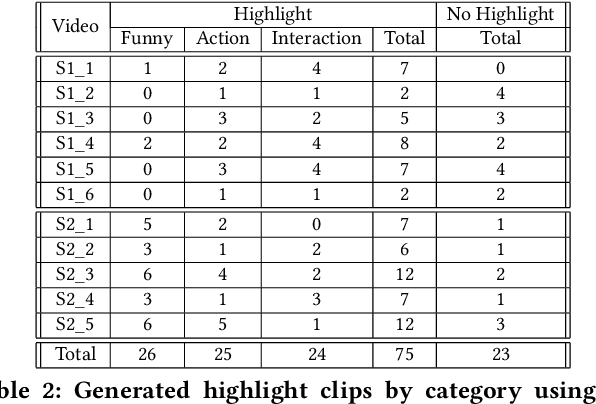
Abstract:We consider the problem of automatic highlight-detection in video game streams. Currently, the vast majority of highlight-detection systems for games are triggered by the occurrence of hard-coded game events (e.g., score change, end-game), while most advanced tools and techniques are based on detection of highlights via visual analysis of game footage. We argue that in the context of game streaming, events that may constitute highlights are not only dependent on game footage, but also on social signals that are conveyed by the streamer during the play session (e.g., when interacting with viewers, or when commenting and reacting to the game). In this light, we present a multi-view unsupervised deep learning methodology for novelty-based highlight detection. The method jointly analyses both game footage and social signals such as the players facial expressions and speech, and shows promising results for generating highlights on streams of popular games such as Player Unknown's Battlegrounds.
 Add to Chrome
Add to Chrome Add to Firefox
Add to Firefox Add to Edge
Add to Edge